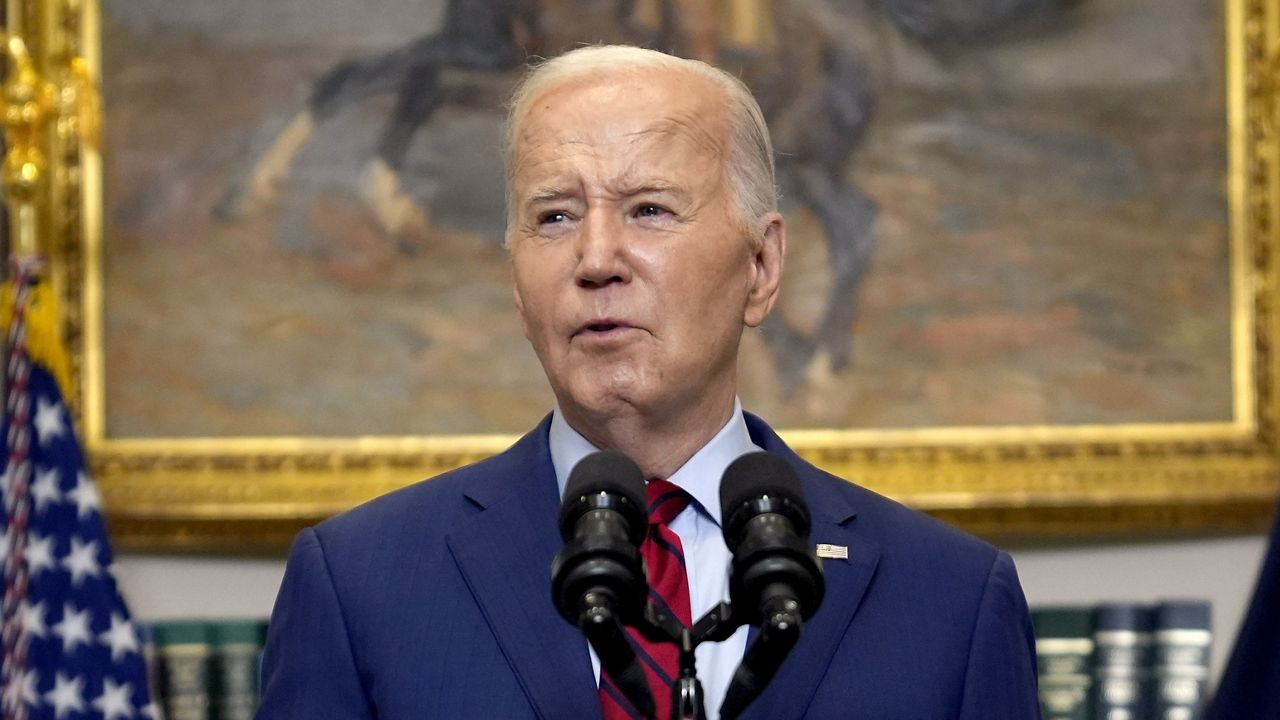President Joe Biden said both Israel and Hamas have agreed to the framework of a multi-stage proposal he laid out in May that aims to ultimately facilitate an end to the now nine-month old fighting in Gaza, while emphasizing there is still more work to do.
“There is still work to do and these are complex issues, but that framework is now agreed to by both Israel and Hamas,” Biden wrote in a post on X, formerly Twitter, on Friday. “My team is making progress and I'm determined to get this done.”
The president first announced that both sides had signed on to the idea during his highly anticipated press conference Thursday evening to round out the NATO summit in Washington. During the press conference, he noted that he sent his team to the region to “hammer out the details.”
On Monday, White House National Security Communications Advisor John Kirby told reporters that CIA Director Bill Burns as well as top White House Middle East advisor Brett McGurk were in Cairo to aid negotiations.
The first phase of the plan laid out by Biden would last six weeks and include a “full and complete” cease-fire, the release of women, the elderly and the wounded still being held hostage by Hamas and the freeing of hundreds of Palestinian prisoners in Israel.
The next stage, which would be negotiated during the six-week cease-fire, would include a “permanent end to hostilities” and the release of all remaining hostages, which includes male soldiers.
The last step is the movement toward a “major reconstruction” plan for Gaza that would include the return of the remains of dead hostages to their families.
The president said Israel had already signed on to the plan when he announced it but there was some confusion around its stance in the ensuing weeks. Hamas responded to the proposal about a month ago.
Biden on Thursday noted that the ultimate question regarding the war has always been what the “day after” looks like in Gaza, noting that he believes Israel cannot occupy the Gaza Strip.
“And there's no ultimate answer other than a two-state solution here,” Biden said.
Israeli Prime Minister Benjamin Netanyahu has opposed such a solution.
Biden, who has faced major pushback from some in his own party over his support for Israel as the Palestinian civilian death toll rose amid the war, was asked on Thursday if there was anything he would have approached differently.
“There's a lot of things that, in retrospect, I wish I had been able to convince the Israelis to do,” he said. “But the bottom line is we have a chance now. It's time to end this war.”
The president on Thursday also noted that he wished the pier on the coast of Gaza, once lauded as a new avenue to get humanitarian aid into the war-torn territory, had been more successful.
“I've been disappointed that some of the things that I've put forward have not succeeded as well, like the port we attached from Cyprus,” Biden told reporters on Thursday. “I was hopeful that would be more successful.”
The comment came just hours after White House National Security Advisor Jake Sullivan told reporters he anticipated that the U.S. will “wind down pier operations” in “relatively short order.” He noted after the reopening of the Zikim and Kerem Shalom crossings, the current challenges around getting supplies to Palestinians is centered on moving aid throughout Gaza rather then getting it into the territory.
“But there are a lot of things that we need to work through, including lawlessness, armed gangs, in some cases, Hamas itself trying to disrupt and derail the delivery of humanitarian assistance and that is really, chiefly, the obstacle to ensuring that the people of Gaza, the innocent people of Gaza get the lifesaving food, water, medicine that they need,” Sullivan said. “It’s distribution within as opposed to distribution from without, into Gaza.”
The multi-million dollar project, billed as an “emergency mission” was announced by Biden during his State of the Union address in March as part of an effort to find new ways to surge desperately needed supplies to starving civilians as the humanitarian crisis in Gaza was worsening. But after taking weeks to build, weather and security issues plagued the pier, leading it to be damaged, repaired, detached and re-anchored multiple times.
The Department of Defense said U.S. Central Command was unable to re-anchor the pier on Wednesday as planned due to “technical and weather-related issues.” The department said a new date to reattach it has not been set and echoed Sullivans comment that it will “soon cease operations.”
The department called the project a “critical part” of the administration’s efforts to get aid into Gaza, adding that nearly 20 million pounds of supplies have been delivered through it, representing the “largest amount of aid transported by the U.S. military over a 3-month period.”
At the same time, it emphasized it “has always been intended as a temporary solution.”
Deputy Pentagon Press Secretary Sabrina Singh on Friday told reporters that aid can now be inspected in Cyprus and delivered directly into Gaza through the Port of Ashdod and other crossings.



